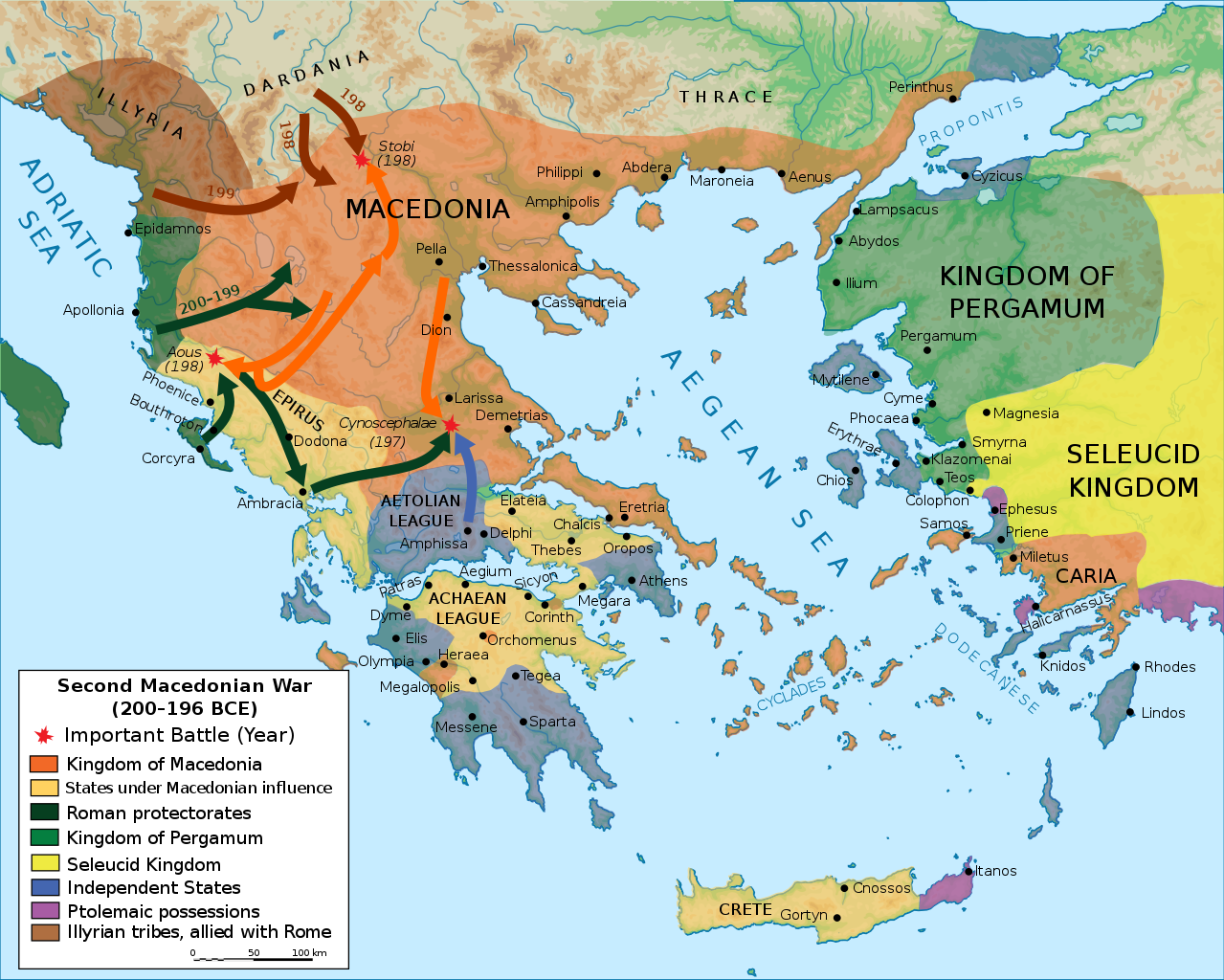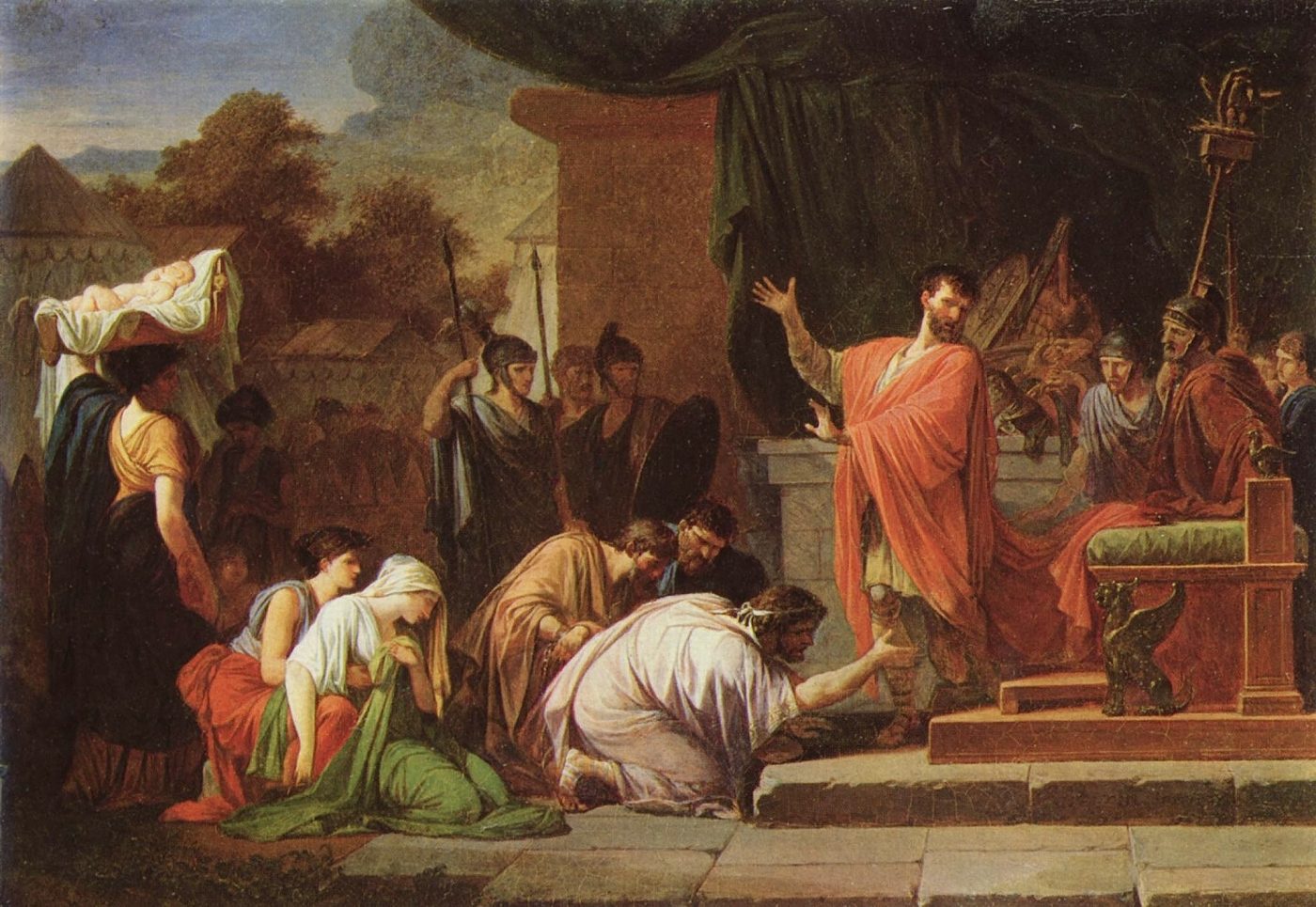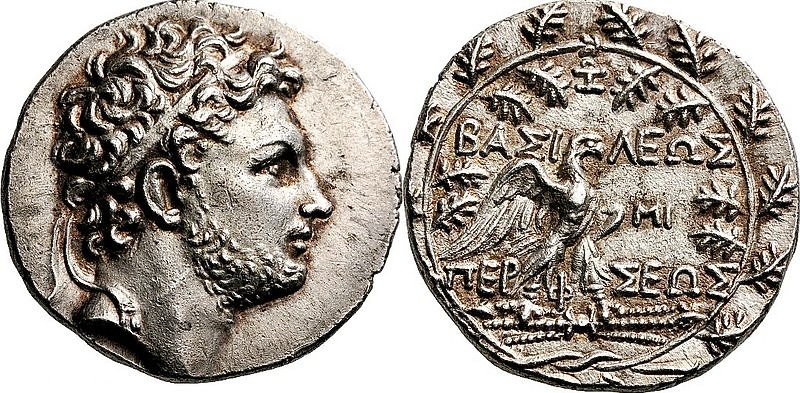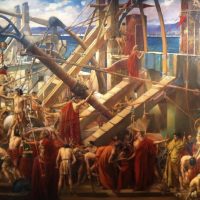What happens when two of the ancient world’s greatest powers meet in battle? This article takes you through the Roman-Macedonian Wars, showing the conflict from both Roman and Macedonian perspectives. You’ll see why Rome saw these wars as crucial for their dominance and what it meant for the Macedonians trying to protect their heritage. Ready to explore this historic struggle from both sides? Read on!
The Roman-Macedonian Wars – A Roman Perspective
In the annals of ancient history, the Roman-Macedonian Wars stand out as a series of pivotal confrontations that shaped the trajectory of Western civilization. From the Roman perspective, these wars were not just about territorial expansion but also about neutralizing a potential threat. The Roman Republic, with its burgeoning power and influence, found itself on a collision course with the Macedonian Kingdom, a formidable entity in its own right. This article delves into the Roman viewpoint of these wars, shedding light on their motivations, strategies, and the challenges they faced.
Rise of Rome and the Macedonian Challenge
As Rome began its ascent to dominance in the Mediterranean, it became increasingly clear that the Macedonian Kingdom, once led by the legendary Alexander the Great, could pose a significant challenge. Macedonia, with its seasoned phalanx, vast resources, and strategic location, was a force to be reckoned with. For Rome, a confrontation was not just inevitable but necessary to secure its position in the region.
Strategic Imperative
Rome’s primary concern was the strategic balance of power. The Macedonian Kingdom, situated in the heart of the Balkans, controlled key trade routes and had alliances that could potentially encircle the Roman Republic. The Romans understood that allowing Macedonia to grow unchecked would jeopardize their own interests. Thus, from a strategic standpoint, neutralizing this potential threat was of paramount importance.
Wars Overview from Roman Perspective
The Roman-Macedonian Wars spanned over a century, comprising four major conflicts. Each war presented its own set of challenges for the Romans:
- First Macedonian War (214-205 BC): Initiated during the Second Punic War, Rome was already grappling with Carthage. The challenge was to manage a two-front war, ensuring that neither Carthage nor Macedonia could exploit the situation.
- Second Macedonian War (200-197 BC): This was a direct confrontation between Rome and Macedonia. The Romans, under the leadership of Titus Quinctius Flamininus, faced the challenge of countering the famed Macedonian phalanx, eventually emerging victorious at the Battle of Cynoscephalae.
- Third Macedonian War (171-168 BC): Led by Perseus, the last Antigonid king, Macedonia sought to challenge Roman dominance. The Romans, under Lucius Aemilius Paullus, faced stiff resistance but ultimately triumphed at the Battle of Pydna.
- Fourth Macedonian War (150-148 BC): This was more of a mopping-up operation for Rome. The challenge was less about military confrontation and more about consolidating their gains and ensuring long-term stability in the region.

Diplomacy and Alliances
One of the standout features of Rome’s approach was its adept use of diplomacy. The Romans were astute in forging alliances, often with smaller states that felt threatened by Macedonian expansion. These alliances not only provided Rome with strategic advantages but also isolated Macedonia, making it harder for them to find allies of their own.
Challenges and Triumphs
From the Roman perspective, the wars with Macedonia were fraught with challenges. The Macedonian phalanx, a tight formation of spearmen, was a formidable adversary on the battlefield. The Romans had to adapt their tactics, relying on flexibility and the manipular formation to counter this threat.
Additionally, the vast distances and rugged terrains posed logistical challenges. Supply lines had to be maintained, and the Roman legions had to be kept motivated in foreign lands, far from home.
Yet, despite these challenges, the Romans displayed remarkable adaptability. Their ability to learn from their adversaries, coupled with their superior strategy and leadership, allowed them to neutralize the Macedonian threat effectively.
Aftermath and Legacy
The culmination of the Roman-Macedonian Wars saw Macedonia’s incorporation into the Roman Republic as a province. This not only expanded Rome’s territorial holdings but also ensured that a potential rival was permanently neutralized.
While Rome emerged victorious, it’s essential to recognize the costs associated with such protracted conflicts. The wars drained resources, claimed countless lives, and left scars that took generations to heal. The Roman populace, while celebrating their victories, also grappled with the human and economic toll of these wars.
From a broader perspective, the wars underscored Rome’s emergence as the preeminent power in the Mediterranean. They showcased Roman military prowess, diplomatic acumen, and strategic foresight.
The Roman-Macedonian Wars – A Macedonian Perspective
In the tapestry of ancient history, the Roman-Macedonian Wars stand as a poignant chapter, marking the decline of the Hellenistic world and the rise of Roman dominance. From the Macedonian vantage point, these wars were not mere military confrontations but symbolized the end of an era. This article delves deep into the Macedonian heart, exploring their aspirations, fears, and the challenges they faced against the burgeoning Roman Republic.
The Macedonian Legacy and the Roman Challenge
The Macedonian Kingdom, birthed from the conquests of Alexander the Great, was a beacon of Hellenistic culture and power. Its influence stretched from the Balkans to the borders of India. Yet, as the years passed, a new power in the West, Rome, began to cast a long shadow over the Hellenistic realms.
Weight of Legacy
For the Macedonians, their legacy was both a source of pride and a burden. The vast empire that Alexander had carved was now fragmented, with Macedonia being one of its most potent fragments. The challenge was to uphold this legacy in the face of external threats, especially from the ever-expanding Roman Republic.
Wars Overview from Macedonian Perspective
The Roman-Macedonian confrontations spanned over a century, punctuated by four significant wars. Each conflict tested the mettle of the Macedonian Kingdom:
- First Macedonian War (214-205 BC): While Rome was embroiled in its struggle with Carthage, Macedonia saw an opportunity. However, the challenge was to leverage this advantage without overstretching its resources.
- Second Macedonian War (200-197 BC): This direct confrontation saw the Macedonians, under King Philip V, pitted against the Roman legions. The Battle of Cynoscephalae was a turning point, where the Macedonian phalanx met the Roman manipular formation, leading to a Roman victory.
- Third Macedonian War (171-168 BC): King Perseus, the last of the Antigonid dynasty, sought to restore Macedonian prestige. The Battle of Pydna, however, ended in a Roman triumph, signaling a shift in the balance of power.
- Fourth Macedonian War (150-148 BC): This conflict was less about Macedonian resurgence and more about Roman consolidation. Macedonia’s resistance was quelled, leading to its annexation as a Roman province.

Challenges
While the external Roman threat was palpable, Macedonia grappled with internal challenges too. The weight of their illustrious past sometimes clashed with the need for innovative strategies against Rome. The Macedonian phalanx, once the pride of Hellenistic battlefields, struggled against the more flexible Roman formations.
Moreover, the political intrigues and shifting alliances within the Hellenistic world often hampered a united front against Rome. The Macedonians, at times, found themselves isolated, with erstwhile allies choosing neutrality or even siding with Rome.
Cultural Implications
Beyond the battlefield, the Roman-Macedonian Wars had profound cultural implications. The Hellenistic world, with its rich tapestry of art, philosophy, and science, faced the pragmatic and militaristic culture of Rome. The Macedonians, as torchbearers of this legacy, felt the weight of preserving their way of life.
However, in the aftermath of their military defeats, a unique fusion began to emerge. The Romans, while victors, were deeply influenced by Hellenistic culture. Macedonian art, philosophy, and science found new patrons in Rome, ensuring that while the political entity of Macedonia waned, its cultural essence endured.
Reflections
From the Macedonian perspective, the wars with Rome marked the end of an epoch. The sun set on the Hellenistic world, making way for the Roman era. Yet, in this transition, there were lessons of resilience, adaptability, and the enduring nature of culture.
The Macedonians, in their confrontations with Rome, showcased valor, strategic acumen, and a deep-rooted love for their legacy. Their struggles serve as a testament to the challenges faced by civilizations when confronted with overwhelming odds.
Do you think the Romans were right to fight against Macedonia? Why or why not? Comment below!
The Last Stand of Perseus A Macedonian Tale of Valor and Fate
In the annals of the Roman-Macedonian Wars, the story of King Perseus of Macedon stands out as a poignant testament to the resilience of the Macedonian spirit against the inexorable march of Roman expansion. This tale, rooted deeply in historical fact, offers a glimpse into the heart of a king who sought to defy destiny and preserve the legacy of his ancestors.

Rise of Perseus
Perseus, the last king of the Antigonid dynasty, ascended the Macedonian throne with a heavy weight upon his shoulders. The previous confrontations with Rome had eroded Macedonian power, and the shadow of Roman influence loomed large over the Hellenistic world. Yet, Perseus was not one to be cowed. He envisioned a revitalized Macedon, one that could stand toe-to-toe with the Roman juggernaut.
Storm
Aware of the Roman threat, Perseus embarked on a series of diplomatic and military maneuvers. He strengthened alliances, bolstered his army, and sought to unify the Hellenistic states against Rome. The stage was set for a confrontation that would decide the fate of the Macedonian Kingdom.
Battle of Pydna
In 168 BC, the Roman and Macedonian forces met at Pydna, a battle that would be etched in history. The Macedonian phalanx, a symbol of Hellenistic military might, faced off against the Roman legions. As the two armies clashed, the initial Macedonian onslaught seemed unstoppable. But as the battle raged on, the uneven terrain began to disrupt the tight Macedonian formation. The Romans, seizing this opportunity, penetrated the phalanx, turning the tide of the battle.
Aftermath
Despite the valiant efforts of Perseus and his army, Pydna marked the end of Macedonian resistance. Perseus was captured and paraded in a Roman triumph, a symbol of Rome’s dominance over the Hellenistic world. Yet, in his defeat, the legacy of the Macedonian spirit lived on, a testament to their indomitable will and love for their homeland.
Titus Quinctius Flamininus The Liberator of Greece
Amidst the tumultuous backdrop of the Roman-Macedonian Wars, the tale of Titus Quinctius Flamininus emerges as a beacon of Roman strategy, diplomacy, and vision. His story, deeply entrenched in historical records, offers a unique Roman perspective on the complex interplay of power, ambition, and the quest for peace in the Hellenistic world.
Rise of Flamininus
A young and ambitious Roman senator, Flamininus was entrusted with the command of the Roman forces during the Second Macedonian War. With Rome’s eyes set on curbing Macedonian influence, Flamininus was not just battling King Philipp V of Macedon but also the legacy of the Hellenistic world.

Diplomat at Work
Before swords clashed, Flamininus, ever the diplomat, sought peaceful overtures. He proposed terms to King Philipp V, emphasizing the liberation of Greek states under Macedonian control. However, as negotiations faltered, it became evident that the path to peace would be carved on the battlefield.
Battle of Cynoscephalae
In 197 BC, Roman legions met the Macedonian phalanx at Cynoscephalae. The undulating hills of Thessaly became the stage for a decisive confrontation. As the Macedonian phalanx pressed forward, a tactical error exposed their flank. Seizing this opportunity, Flamininus ordered a charge, turning the tide of the battle and ensuring a Roman victory.
Liberator’s Proclamation
In the aftermath of Cynoscephalae, Flamininus did something unprecedented. At the Isthmian Games, before a vast assembly of Greeks, he proclaimed the liberation of the Greek states from Macedonian dominance. This gesture earned him the title of “Liberator of Greece,” showcasing Rome not as conquerors but as champions of freedom.
More of → Perspectives ←
FAQ
1. How did the economic landscapes of Rome and Macedonia influence the trajectory of the Roman-Macedonian Wars?
The economic landscapes played pivotal roles in shaping the Roman-Macedonian Wars. Rome, with its burgeoning trade networks across the Mediterranean, sought to secure and expand its economic interests. Macedonia, on the other hand, controlled crucial trade routes and possessed rich mineral resources. The competition for economic dominance and control over trade routes added another layer of complexity to the wars.
2. How did naval power and maritime strategies factor into the Roman-Macedonian confrontations?
Naval power was a significant aspect of the Roman-Macedonian confrontations. While Macedonia had a formidable navy, Rome’s maritime strategies evolved rapidly, allowing them to challenge Macedonian dominance in the Aegean Sea. Key naval skirmishes not only determined control over trade routes but also influenced the flow of ground campaigns.
3. Were there any significant spies or intelligence figures that played a role in the Roman-Macedonian Wars?
Espionage and intelligence gathering were crucial during the Roman-Macedonian Wars. While specific spies’ names might not have been recorded prominently in history, both sides employed agents to gather information on enemy movements, plans, and strategies. This covert warfare often influenced the decisions of generals and kings, shaping the course of battles.
4. How did the Roman-Macedonian Wars influence art, literature, and philosophy in both cultures during and after the conflicts?
The wars led to a fascinating fusion of Roman and Hellenistic cultures. Macedonian art and philosophy deeply influenced Roman thought, leading to the proliferation of Hellenistic ideas in Rome. Conversely, Roman architectural and literary styles found their way into Macedonian culture. This cultural exchange enriched both civilizations, leaving a lasting legacy.
5. How did the outcomes of the Roman-Macedonian Wars shape the subsequent relationships between Rome and other Hellenistic states?
The Roman victory and subsequent annexation of Macedonia sent ripples across the Hellenistic world. Many states, witnessing the might of Rome, chose diplomacy over confrontation. Alliances were forged, and Rome’s influence expanded peacefully in many regions. However, some states, inspired by Macedonian resistance, did challenge Rome, leading to further conflicts.
This was a delight to read. You show an impressive grasp on this subject! I specialize about Appliances and you…
i think he was just a crazy guy, a victim of his childhood and enviroment
super interesting 🤔
Loved this article, learned a lot!




Leave a Reply